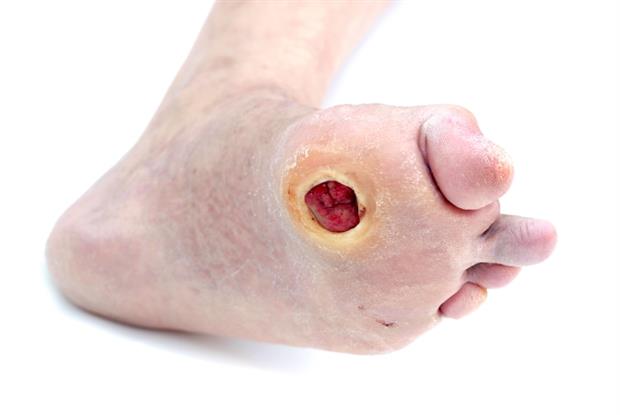Diabetic Foot Ulcer
/daɪʌbɛtɪk/ /fʊt/ /ʌlsɝ/
1. [noun] a diabetic foot ulcer is an open sore or wound that is commonly located on the bottom of the foot. Ulcers can form due to a combination of factors, such as lack of feeling in the foot, poor circulation, foot deformities, irritation (such as friction or pressure), and trauma, as well as duration of diabetes. Patients who have diabetes for many years can develop neuropathy, a reduced or complete lack of ability to feel pain in the feet due to nerve damage caused by elevated blood glucose levels over time. The nerve damage often can occur without pain, and one may not even be aware of the problem. Your [foot care health provider] can test feet for neuropathy with a simple, painless tool called a monofilament. See: https://www.apma.org/Patients/FootHealth.cfm?ItemNumber=981 ; Accessed may 28 2019 For additional information see: https://www.aafp.org/afp/2002/1101/p1655.html ; Accessed May 28 2019 Additional learning: Note the multiple diabetic symptoms occuring with this foot. Ulcer, amputation, deformities, possible vascular disease. Image souce: eastcoastpodiatry.sg Accessed: July 1st 2019
Source: https://www.apma.org/Patients/FootHealth.cfm?ItemNumber=981

Frequently Asked Questions
How does reduced sensation in the foot relate to the development of open sores in a diabetic condition?
When foot nerves lose sensitivity, small injuries may go unnoticed, leading to irritation that can slowly progress into an open sore or ulcer. Everyday movements can worsen these wounds if the injury is not recognized.
Why does friction from daily activities trigger changes in a diabetic foot?
Repeated pressure or friction on the foot, especially when neuropathy limits pain perception, may cause skin breakdown. Changed or overloaded pressure points can give rise to wounds that escalate with continuous irritation.
Is it always true that diabetic foot ulcers only occur on the bottom of the foot?
While ulcers most commonly appear on weight-bearing areas, they are not confined solely to the bottom. Reduced sensation and poor circulation can lead to unnoticed injuries and sores anywhere on the foot.